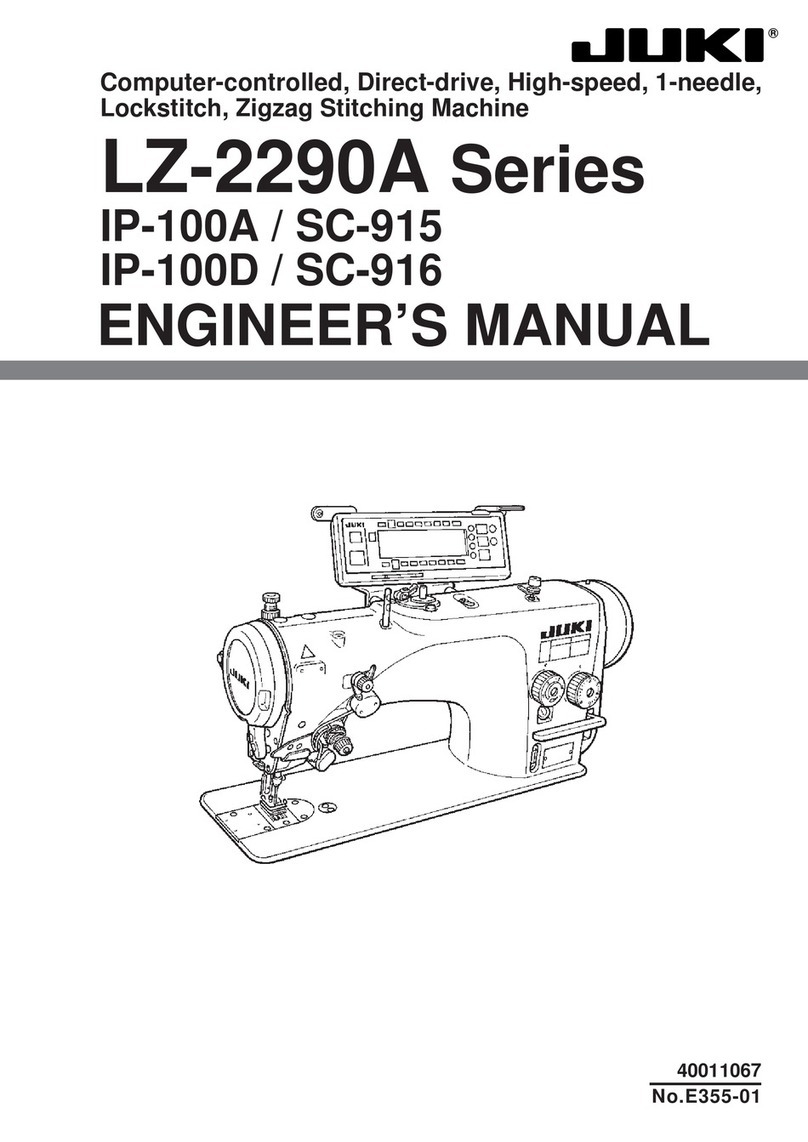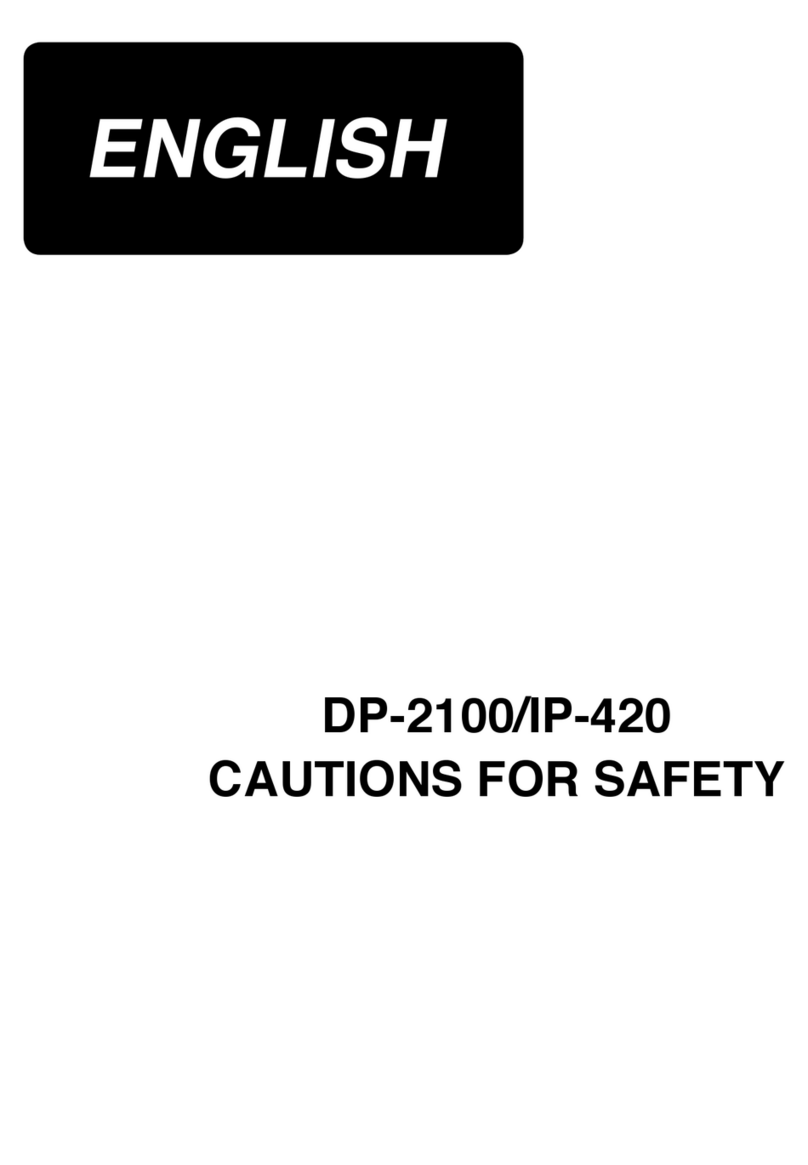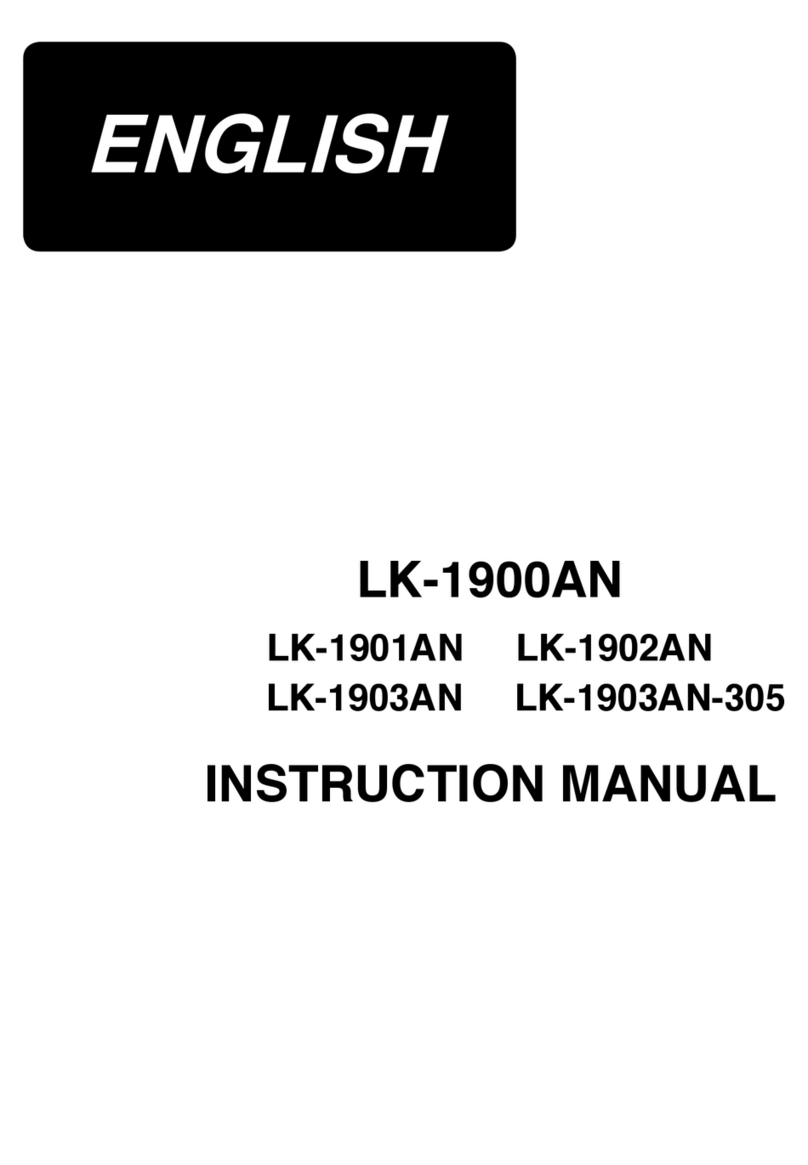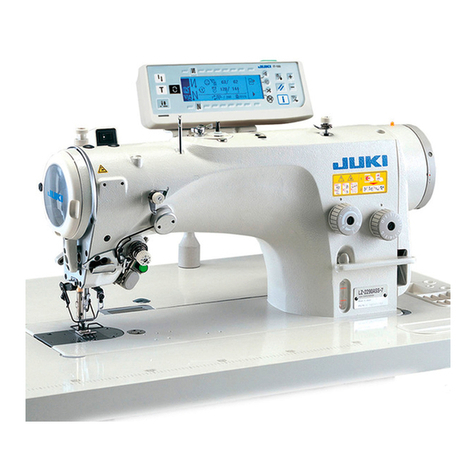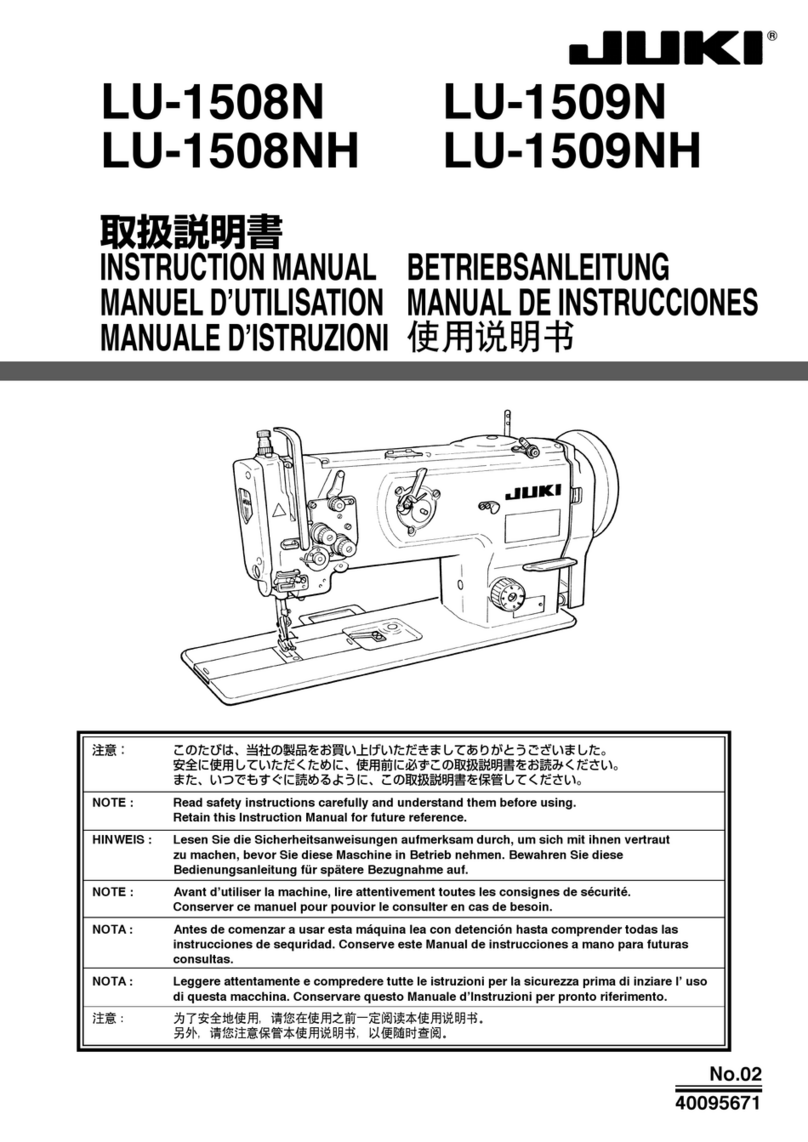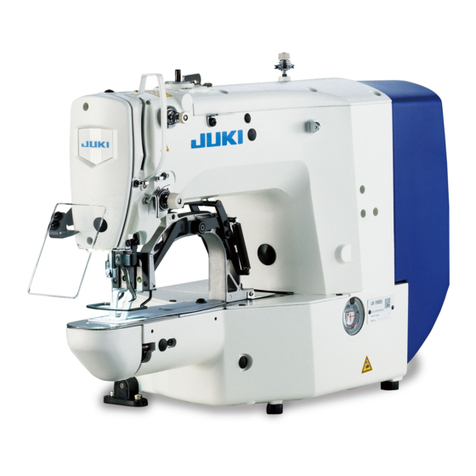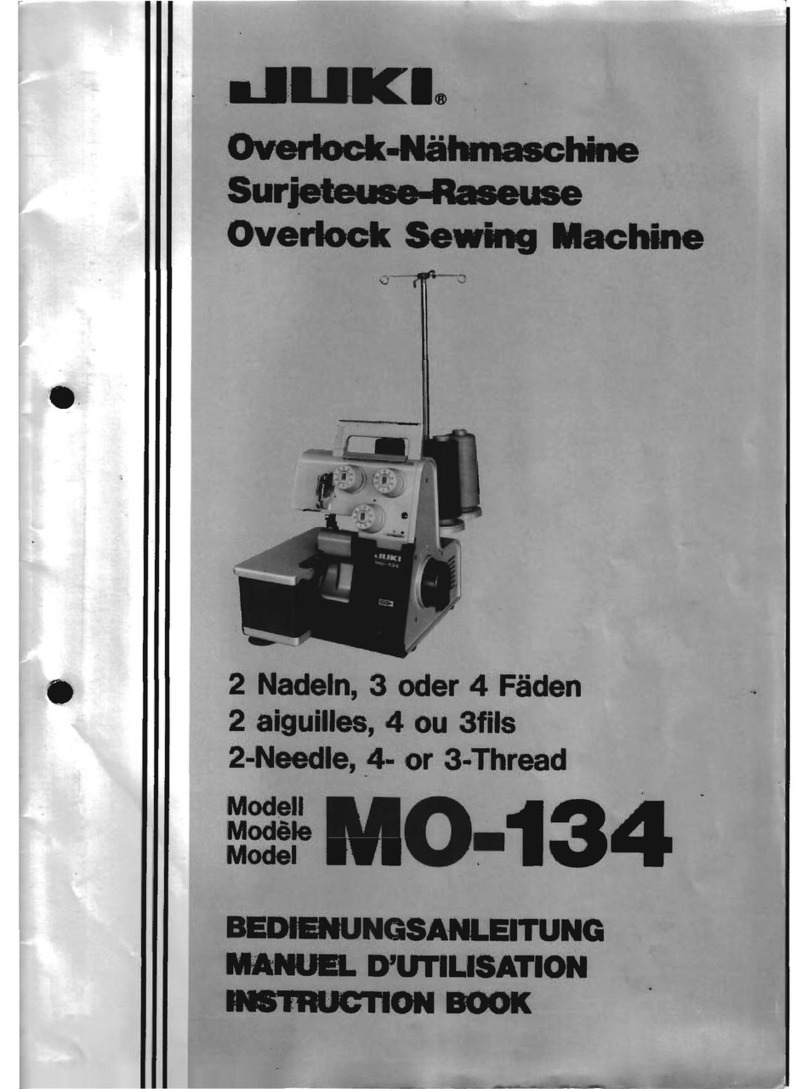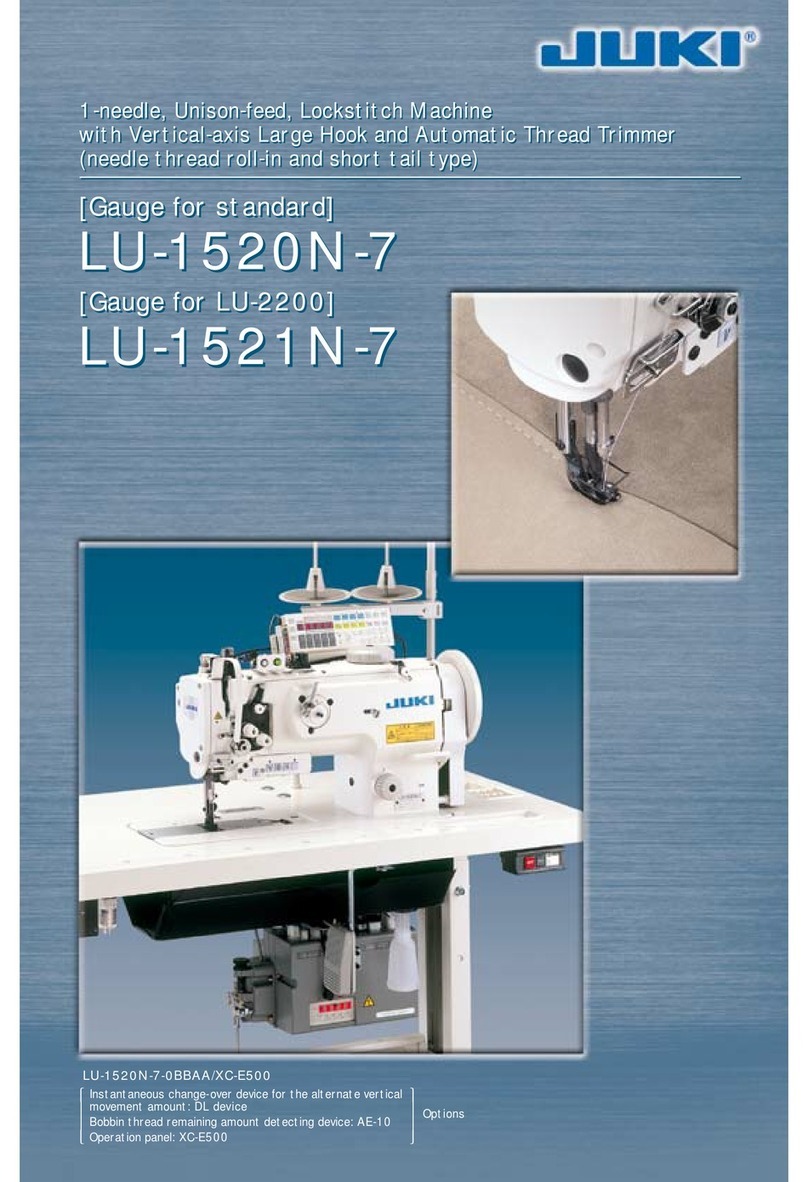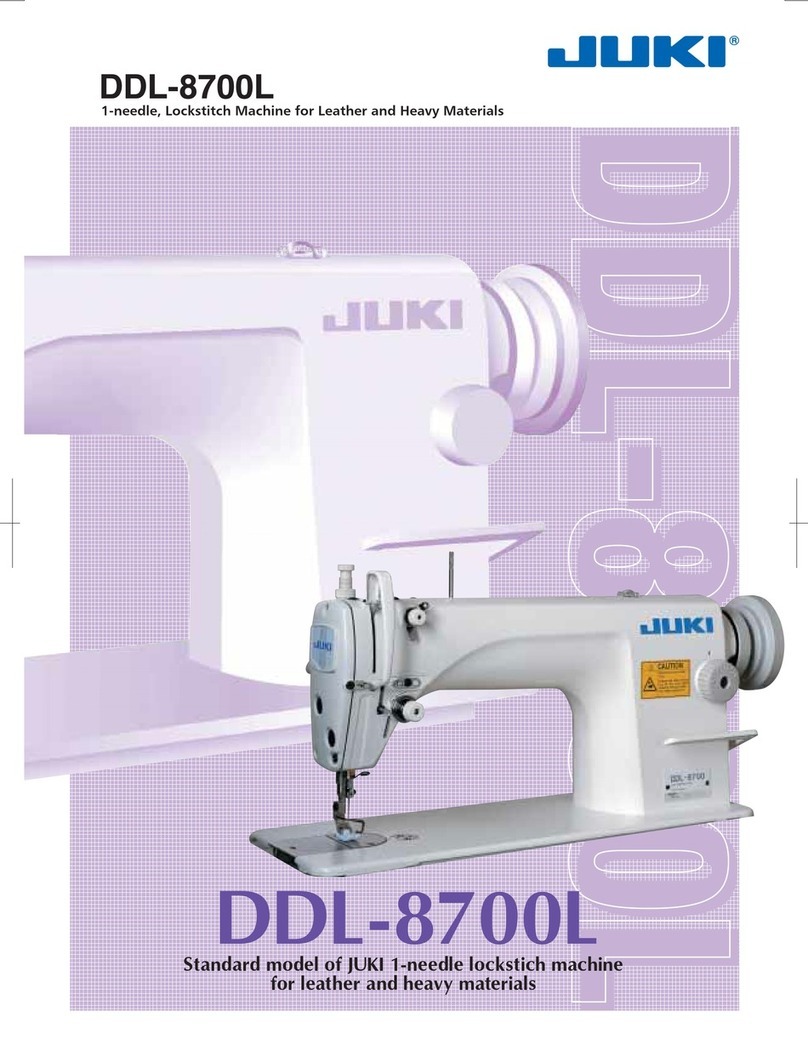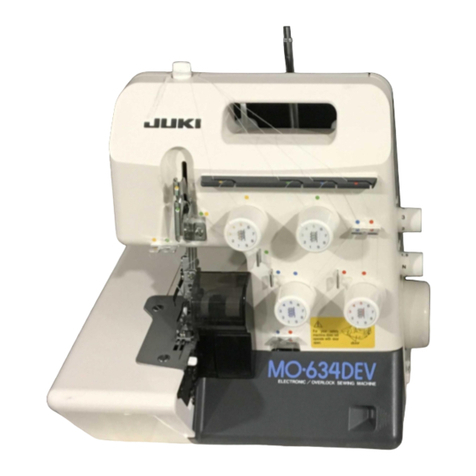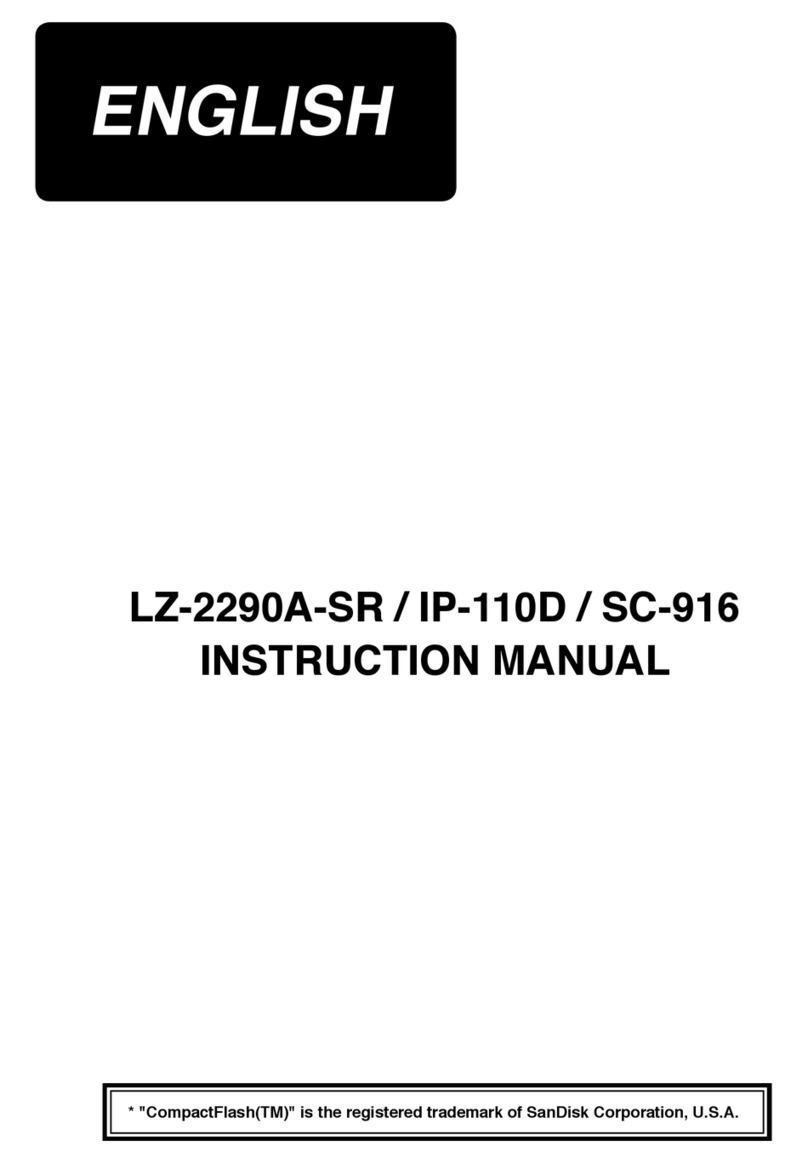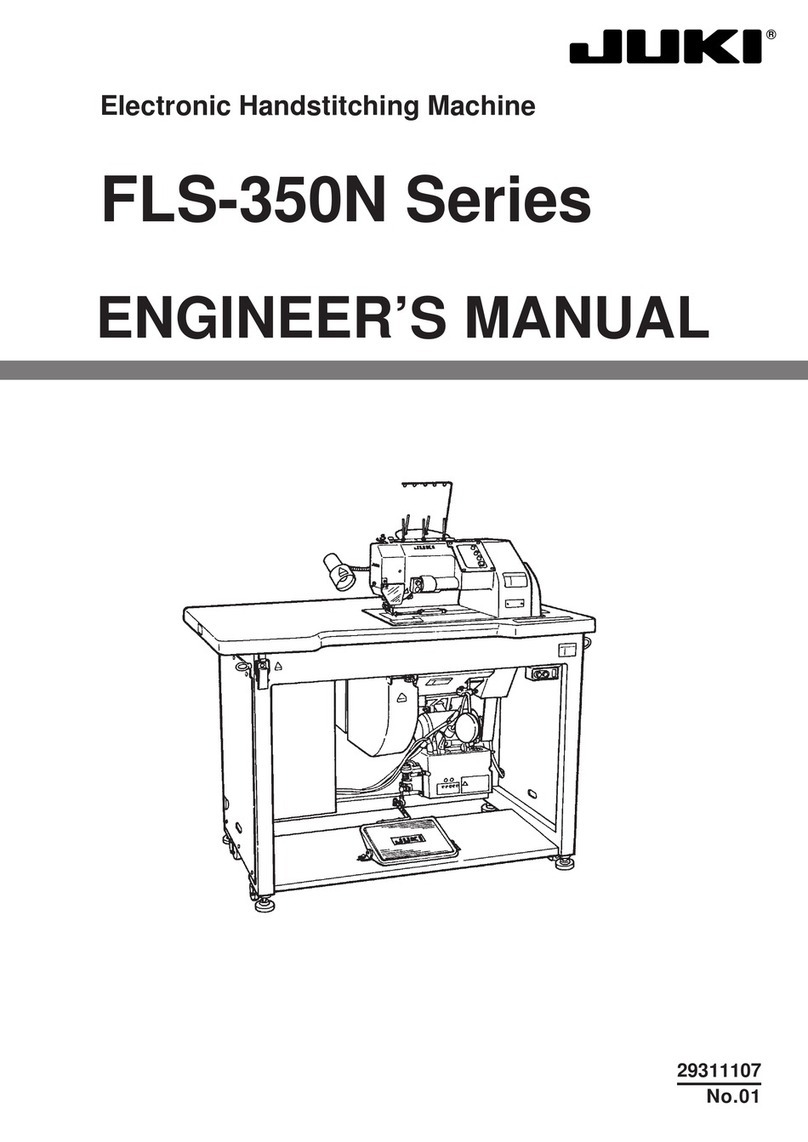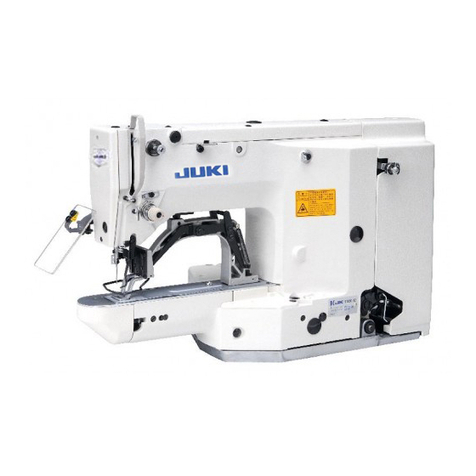–1 –
[1] Specifications of TL-98E
(1)Speed control device
Foot controller method : 80 to 1,500 rpm
(2)Table and stand components
Main unit : Portable type main unit with soft case (Case is folded in two and packed with main unit.)
One-touch type auxiliary table knee lifter is provided as standard. (Packed together)
Handle : Pull-up/down from machine main unit type
(3)General mechanism
1. Thread take-up : Slit type link thread take-up for one-touch threading
2. Hook : DB type horizontal full-rotary hook
3. Pressing pressure adjustment : Stepless adjusting screw with pressing pressure indicator method
4. Lighting device : Built in face cover Switch : Slide type
Lamp ...... Halogen lamp
5. Needle thread post : Thread guide of thread post is of tilting type and capable of one-touch
threading
6. Bobbin thread winder : One-touch action : Starting method by controller Automatic stop
when bobbin thread winding completed
7. Power switch : ON/OFF 2-step method
8. Lift of presser foot : By lever : 7 mm Max. by lever : 10 mm By knee lifetr : 12 mm
9. Thread tension : Disk pressure adjusting type with simplified disk pressure scale
10. Drop feed : 2-step changeover by knob method (Feed dog : UP : DOWN)
(4)Feed mechanism
1. Feed amount adjustment : Dial method ......Stepless 0 to 6 mm
2. Reverse feed stitch : Lever method ...... Feed amount conforms to that of normal feed stitch.
(5)Special mechanism
1. Automatic thread trimming : Thread trimming switch is used in common for pushbutton type and
for external foot pedal switch type.
2. Needle bar stop position : Electric brake stop method
Stop by controller : Down stop
Stop by automatic thread trimming : Up stop
Stop by bobbin winder : Up stop
3. Needle up/down switch : Switch is of pushbutton type and up/down stop by half rotation of
main shaft
4. Prevention of reverse setting of needle : Needle is attachable to normal direction only.
5. Motor protection
Overcurrent : When motor is locked for approximately one second due to sudden overload, motor power
is automatically turned OFF and returns to the ON state immediately.
Overheat : When motor temperature has abnormally risen, motor power is turned OFF (thermal cut)
and returns to the ON state when temperature has fallen.
(6)Dimensions and weight
Main unit : 452W x 219L x 319H (mm)
Weight : 11.3kg
(7)Power consumption
Whole sewing machine : 120V 1.4A/60Hz
Lamp : 12V 3W (Halogen lamp)
